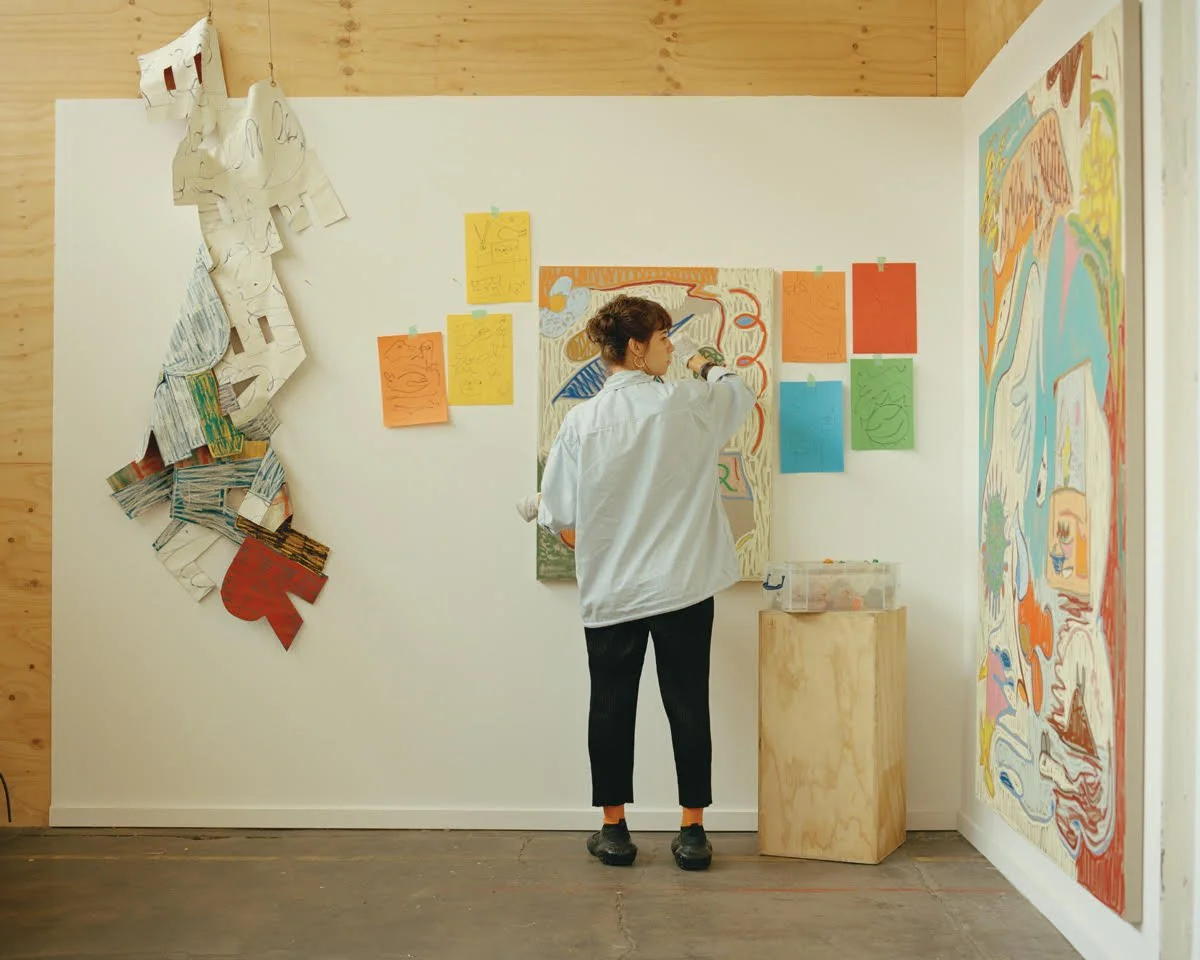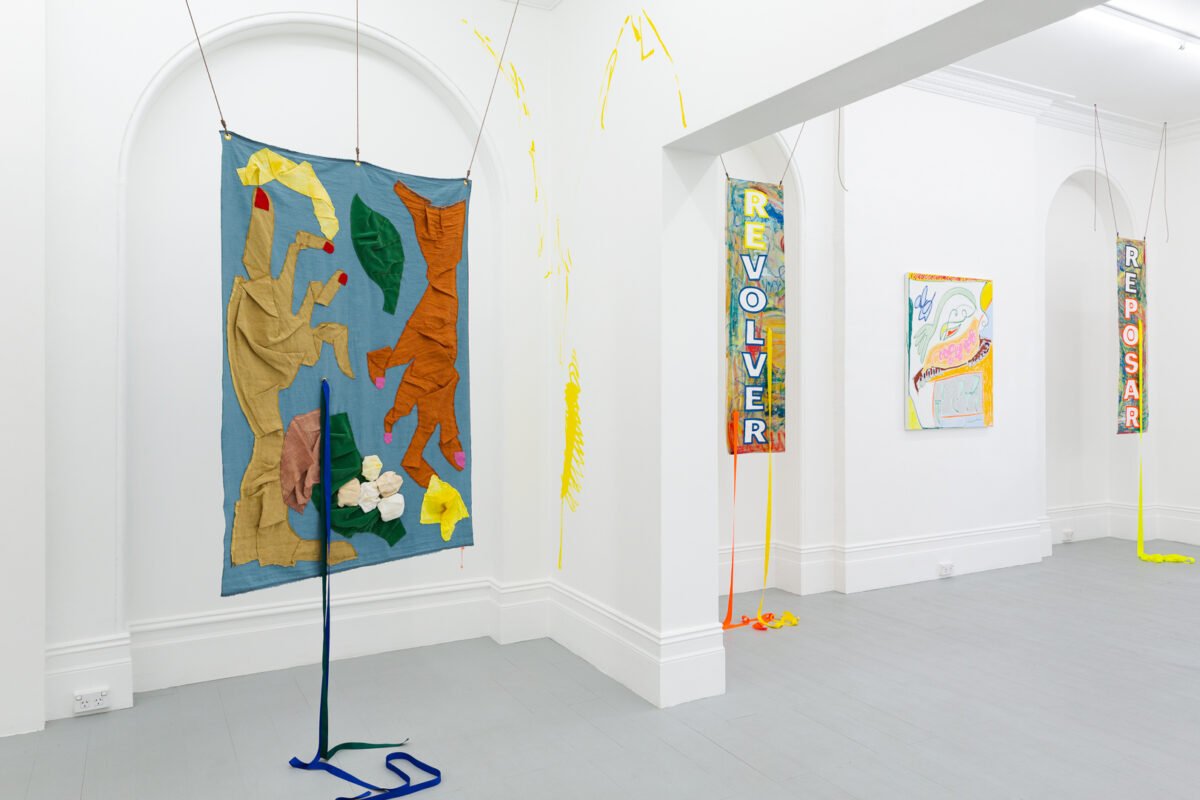Nadia Hernández: Louder Than Words.
Winner of the prestigious Grace Cossington Smith Art Award in 2021 and a Sulman Prize finalist in 2023, this rising Venezuelan-Australian artist makes an articulate anti-authoritarian statement.
First, a little biographical information: Born in 1987 in the city of Merida, high in the Andes, Nadia Hernández and her mother left Venezuela in 1999, when Marxist military strongman Hugo Chávez rose to power. A few years later, the two migrated to Australia, settling in Brisbane. After high school, Hernández completed a Bachelor of Fine Arts degree, specialising in fashion, at the Queensland University of Technology, and subsequently studied for a diploma in design.
Each of these elements of her background are on display in Hernández’s work — vibrant, visually striking canvases that often feature wordplay in Spanish, and reference the political situation in Venezuela, which unfortunately remains tumultuous. The United States, European Union and neighbouring nations including Argentina, Costa Rica, Chile, Ecuador, Guatemala, Panama, Paraguay, Peru and Uruguay have refused to recognise the result of disputed Venezuelan elections in August that saw Nicolás Maduro — Chávez’s successor and fellow critic-jailing autocrat — handed his third six-year term as president. “We are dealing with a dictatorship that falsifies elections,” said Chile’s President Gabriel Boric.
It was during the 2012 elections that Chávez ‘won’ under similarly questionable circumstances that Hernández began making art.
She explains: “I didn’t have the intention to become an artist. Actually, I was trying to just find ways to show support and solidarity for my family who were living back in Venezuela at the time, and trying to encourage them by making these very simple, three-coloured paper cutouts that said things like, ‘Go out and vote,’ or ‘Have no fear, go out and vote.’ So it was a very, very political, very specific type of messaging that I was creating, to send to my family and to kind of hope that other people would see it as well. That’s how I started, but I never thought I would become an artist. I was just always interested in doing my own projects, because I just felt like, I had things that I wanted to say, that I wanted to dedicate time to. And then over time, I had an exhibition, and then things kind of just started to emerge from there.”
Her work’s political motivation, Hernández says, explains her habitual integration of the written word.
“I’ve really wanted to be clear about getting that message across. Before I painted and before I used visuals or symbolism to express my ideas and what I was feeling, I used to write, and I used to read a lot of poetry, mainly as like an angsty teenager. My grandfather was a poet, though that wasn’t his profession; he was a university professor. But I was just really inspired by poetry. And then I think also moving out of home, and moving to Sydney and being really far from my mum, who lives in Brisbane, and my other family members who are all over the world, I felt as though I needed to find a way to continue to remember my mother tongue or my language. And I think that’s why text is so embedded in my practice. For me, it’s kind of about finding that intersection where images, symbols and texts can exist together, because my work is so fragmented, and collage-like, everything serves as a reminder, of memories, of emotions.”
Hernández has lived in Australia for two decades now. However, her work can’t help but be coloured by the migrant experience.
“I think that (migrant) experience, it’s fascinating, and it’s a blessing in a lot of ways. Because often, when you’re growing up in a place, you’re existing in it, you’re not really questioning your surroundings so much, but then when you move away from it, and that carpet is pulled from under you… You might arrive at a place and not speak the language. You have to work out how you’re going to preserve your own culture, how you’re going to integrate into this new society. And you’re negotiating all these different ways of being and existing. That moment of discovery, but that is also quite confrontational, that feeds into the work, it feeds into the energy of that fragmentation where you’re trying to learn, you’re trying to retain something, but you’re also trying to grow and become something new.”
Hernández continues: “My desire has always been that my work expresses a political message to try to describe the infinite ways in which Venezuela has been devastated over the past two decades and that experience of living outside of the country. But I do it with a lot of colour, a lot of vibrancy. And for me that’s an invitation for people to be a part of that conversation.
“It’s always interesting, as a migrant, to look at who can and who can’t, who has the ability to express an opinion or the freedom to express an opinion, because it’s not every country where people have that freedom. A lot of people suffer from oppression in a lot of parts of the world. So it really depends on your subjectivity in that place. But as a Venezuelan person, being able to make this work outside of the country, it’s obviously really important for me, to continue to call out an authoritarian regime. But I haven’t been back to the country in a very long time, a lot of my family has left, so there’s a tinge of hesitation and fear.”
The ability to explore these themes freely, alongside subjects closer to home, is a real blessing, Hernández says.
“For me, the greatest thing about Australia, it’s the friendships that I’ve made, the artists that I have around me, the people that I feel like continue to inspire to feed into my craft — all these great artists who are making work that’s also pushing to us question, what is the Australian identity and like, how do you continue to define and expand upon that and how do you continue to acknowledge First Nations peoples? That’s what’s really important. That’s what makes me feel excited.”
Nadia Hernández is represented by Station Gallery in Sydney and Melbourne.



